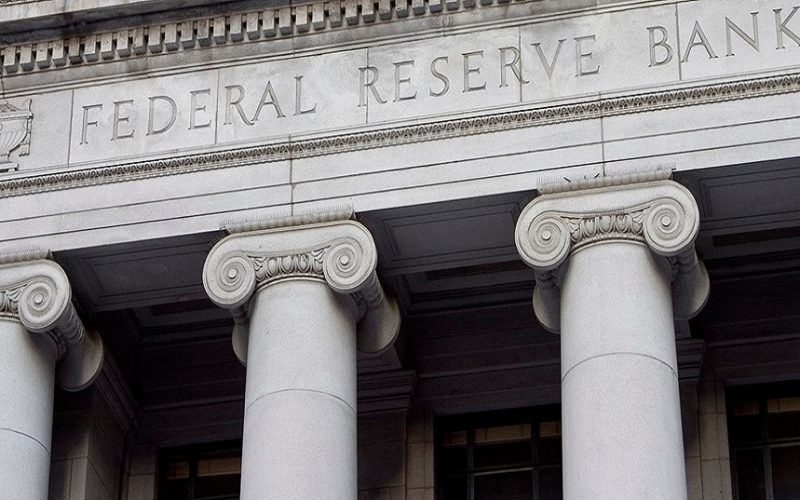by Liz Ann Sonders, Chief Investment Strategist, Charles Schwab & Company Ltd.
Key Points
- The Fed made no changes to its interest rate or balance sheet policies; but some of the language in its statement was tweaked, reflecting recent hotter inflation data.
- Underscoring a bit of a hawkish tilt, the FOMC—in its dots plot—signaled they now expect two interest rate increases by the end of 2023.
- Despite continued progress in the labor market and an increasing pace of inflation, Chairman Jerome Powell reiterated that the Fed will be transparent in signaling when a tapering in asset purchases is to come.
As expected, the Federal Open Market Committee (FOMC) made no formal change to its interest rate or balance sheet policy. In a unanimous decision, it held the target fed funds rate unchanged at 0-0.25%, where it’s been since March 2020, and will continue to purchase $120 billion per month of Treasury and mortgage-backed securities. Regarding tapering its $7 trillion balance sheet, the statement retained the reference substantial further progress (in both its inflation and employment mandates).
The FOMC signaled they now expect two interest rate increases by the end of 2023, a more hawkish projection relative to this past March; and likely explains the initial reaction by markets (yields and the U.S. dollar rose, and stocks fell). The committee’s quarterly projections now show 13 of 18 FOMC officials favoring at least one rate hike by the end of 2023 vs. only seven in March. There are now eleven FOMC officials expecting at least two hikes by the end of that year; while seven expect a move as early as next year—up from four in March. You can see the so-called “dots plot” of these projections below.
In reference to the pandemic, the accompanying FOMC statement had a few key changes relative to the April statement. “The COVID-19 pandemic is causing tremendous human and economic hardship across the United States and around the world” was altered and now reads “progress on the vaccinations has reduced the spread of COVID-19 in the United States.” The statement also emphasized that vaccinations “will likely continue to reduce the effects of the public health crisis on the economy, but risks to the economic outlook remain.”
The only other notable change within the statement was regarding inflation and the Fed’s goal. In April, inflation was viewed as “running persistently below this longer-run goal” while today’s statement cited inflation as “having run persistently below this longer-run goal”—clearly a reflection of the latest hot inflation data releases.
The FOMC also released an update to its Summary of Economic Projections (SEP), shown below. The SEP shows a higher median gross domestic product (GDP) projection for this year—from 6.5% in March to 7.0% today. There was no change to expected GDP next year, although 2023’s projection ticked up. There were minimal changes to the unemployment rate projections; with 2021 and 2022 unchanged, and 2022 slightly lower.
Inflation has been the hotter topic lately; and officials now expecting the core personal consumption expenditures (PCE) measure of inflation to be 3.4% by the end of this year, compared to a median forecast of only 2.4% back in March. Reinforcing the Fed’s view that the recent surge in inflation will prove “transitory,” the inflation forecasts for 2022 and 2023 were bumped up by only 0.1% each year.
Source: Charles Schwab, Federal Reserve, as of 6/16/2021. Note: Projections of change in real gross domestic product (GDP) and projections for both measures of inflation are percent changes from the fourth quarter of the previous year to the fourth quarter of the year indicated. PCE inflation and core PCE inflation are the percentage rates of change in, respectively, the price index for personal consumption expenditures (PCE) and the price index for PCE excluding food and energy. Projections for the unemployment rate are for the average civilian unemployment rate in the fourth quarter of the year indicated. Each participant’s projections are based on his or her assessment of appropriate monetary policy. Longer-run projections represent each participant’s assessment of the rate to which each variable would be expected to converge under appropriate monetary policy and in the absence of further shocks to the economy. The projections for the federal funds rate are the value of the midpoint of the projected appropriate target range for the federal funds rate or the projected appropriate target level for the federal funds rate at the end of the specified calendar year or over the longer run. 1For each period, the median is the middle projection when the projections are arranged from lowest to highest. When the number of projections is even, the median is the average of the two middle projections. 2Longer-run projections for core PCE inflation are not collected.
Powell’s presser pressure
Although this report was put into the publishing queue before Fed Chair Jerome Powell’s press conference was complete, here are some highlights from the first half hour:
- “Those least able to shoulder the burden have been hardest hit,” with unemployment having fallen disproportionately on lower-wage workers in service sectors; and on Black and Hispanic workers in particular.
- Powell did follow that with his view that within a year or two, the United States will be “on a path to a very strong labor market.”
- Powell noted that the last economic expansion showed that labor supply can move above its estimated trend, and that it could happen again. However, he also expressed the caveat that a significant number of people are retiring.
- Labor supply is being held back by people needing to find new jobs; with most people who could return to their old jobs having already done so. Powell believes that finding new jobs could take time, and there might be a “speed limit” on it as new skills need to be developed.
- “Inflation could turn out to be higher and more persistent than we expect.” (Although Powell expects it to come back down next year.)
- Supply chain bottlenecks are “larger than anticipated.”
- Pressed on plans for tapering, Powell repeated what was in his opening statement, which was that the committee will update the public on the progress made toward its goals and that it will give advance notice of any plans to taper purchases.
- Powell did say he is ready to retire the “talking about talking about” tapering language; ostensibly suggesting that that occurred at the April FOMC meeting.
- When asked about the judgement/meaning of “substantial further progress” toward goals, Powell said it’s “up to the FOMC” and that he can’t speak to how/what specific numbers may justify that call.
- Powell did emphasize that tapering will be “orderly, methodical and transparent.”
- Powell believes the main takeaway from the updated dots plot should be that many participants are more comfortable that the economic conditions in the Fed’s forward guidance will be met somewhat sooner than previously thought. (When the Fed introduced the “substantial further progress” language in December 2020, its 2021 GDP growth forecast was 4.2%; which was revised to 7% today).
Inflation debate’s missing ingredient(s)
Powell’s focus on coming stronger economic (and job) growth as an offset to inflation concerns is an important consideration for investors. Too much of the raging inflation debate leaves out the impact of economic growth on the outlook for the equity market. My friend, and esteemed Leuthold Group strategist Jim Paulsen, took an interesting look at inflation trends and market performance during all economic expansions (all quarters when the trailing year/year real GDP growth was positive) since 1950. While past performance is no guarantee of future results, perhaps no surprise is that the average annualized quarterly return for the S&P 500, when the annual rate of inflation as measured by the Consumer Price Index (CPI) was decelerating, was 10%. Conversely, when the annual rate of CPI was accelerating, the average S&P return was only 3.7%.
Importantly though, over that same span, Jim divided real GDP growth into quartiles. When growth was in its lowest quartile (0% to 2.3%), the S&P had an average return of 11.3% when inflation was falling and a -7.3% average return when inflation was rising. At the other end of the spectrum, was the top quartile for real GDP growth, with a range of 4.8% to 13.4%. During those periods, the average return for the S&P 500 was actually higher when inflation was rising than when it was falling: 6.3% and 5.0%, respectively.
In sum
Investors will likely remain uber-focused on inflation over the next couple of months. At least a portion of the upside pressure—the base effects relative to last year’s pandemic-related deflation—should begin to fade quickly. Supply chain disruptions and bottlenecks could take a bit longer and will vary from product to product and industry to industry. Longer term, inflation’s trajectory will be largely dependent on the labor market and whether wage growth becomes persistent and pervasive—possibly leading to a “wage-price spiral” type of inflation. For what it’s worth, we sit in the transitory camp.
While we wait to see how this fleshes out, it’s important to point out that inflation can’t be viewed in a vacuum. It’s too soon to judge whether the Fed’s firm belief that inflation will be “transitory” comes to fruition; but other factors need to be considered in the meantime, including economic (and productivity) growth and further healing in the labor market.


















